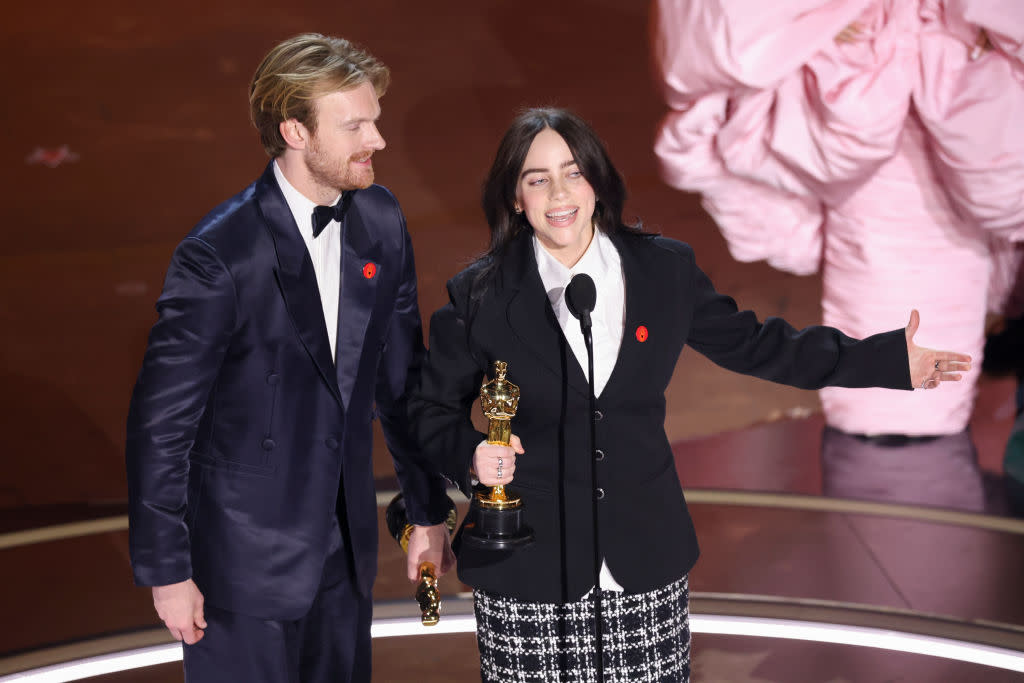Even with ‘Barbie,’ the Oscars Had Its Smallest Percentage of Female Viewers Since 2016

Of the 19.5 million people who tuned into the Oscars on Sunday, 60.3 percent were female, according to Nielsen. While women (and girls age 2+) made up the significant majority of the audience for the 96th Academy Awards (as per usual), it was their lowest percentage since 2016 (58.4 percent female). Yes, even with “Barbie” in the (Dream)house.
Last year’s Academy Awards, also hosted by Jimmy Kimmel, were watched by 18.8 million viewers; 61.1 percent of them were female. The 2022 Oscars (yes, the one with the slap), hosted by three women — Wanda Sykes, Regina Hall, Amy Schumer — skewed 61.0 percent female. The host-less 2021 program skewed 62.7 percent female; those were the first COVID-impacted Oscars and they settled for all-time low viewership.
More from IndieWire
The 2021 Oscars remain the high-water mark for representation among nominees, according to the annual study by USC’s Dr. Stacy L. Smith, the Annenberg Inclusion Initiative, and Adobe Foundation. “Nomadland” won Best Picture that year, Best Actress for Frances McDormand, and Best Director for Chloé Zhao.
The actual awards aside for a moment, most viewers would probably say the highlight of the 2024 Oscars was Ryan Gosling’s hot-pink performance of “I’m Just Ken.” Another “Barbie” song, “What Was I Made for?” by Billie Eilish, marked the film’s lone win out of eight nominations. While it was a very “Barbie” Oscars, a likely explanation for the surge of male viewers can be found on the opposite end of “Barbenheimer.”
“Oppenheimer” entered Sunday with the most Oscar nominations, and exited with the most statuettes. The Christopher Nolan film won Best Picture, Best Supporting Actor for Robert Downey, Jr., Best Film Editing, Best Cinematography, Best Original Score, Best Actor for Cillian Murphy, and Best Director for Nolan.
Nolan’s filmography has historically skewed male. Plus, there’s just something about the Atomic Bomb that men can’t resist, we suppose — especially men of a certain age.
Sunday’s audience also skewed older than usual. The median age was 61 vs. 60 last year. (Yes, we recognize logic dictates that 2023’s viewers would be one year older in 2024.)
With each passing year, broadcast television’s median-age audience goes up as millennials and Gen Z continue to cut the cord. It is the baby boomers who keep ABC (and NBC and definitely CBS; Fox is debatable) afloat.
The baby boomer generation was conceived and born after World War II, which ended five years after the events of Nolan’s “Dunkirk.” Guess what weapon finished WWII? Right. Suffice it to say, Nolan’s audience has a vested interest.
Best of IndieWire
The Best LGBTQ Movies and TV Shows Streaming on Netflix Right Now
Guillermo del Toro's Favorite Movies: 54 Films the Director Wants You to See
Nicolas Winding Refn's Favorite Films: 37 Movies the Director Wants You to See
Sign up for Indiewire's Newsletter. For the latest news, follow us on Facebook, Twitter, and Instagram.

 Yahoo News
Yahoo News 
